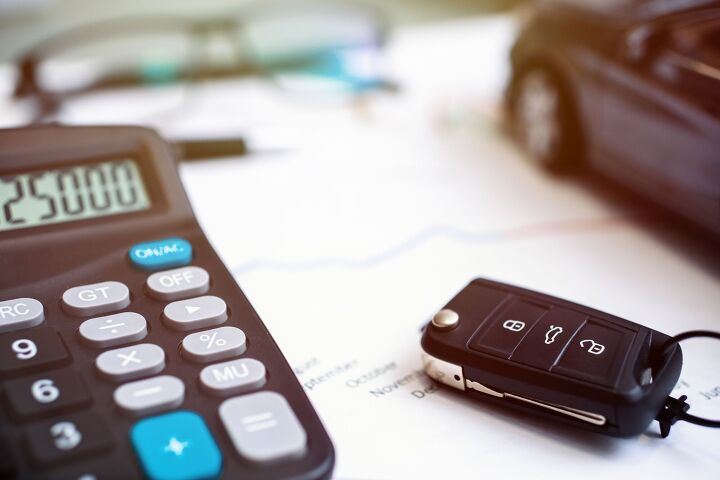That’s Grand: Record Numbers of Car Payments Exceed $1,000/mo

If you’re thinking that an ever-climbing percentage of the average household income is being allocated toward car debt – you’re exactly right. According to third-party industry watchers, the number of notes with a monthly payment of $1,000 or more has risen to record heights.
How many? A notable 15.7 percent of new vehicle customers signed on the dotted line for four-figure payments in the fourth quarter of 2022, according to Edmunds. That’s compared to 10.5 percent during the same timeframe in 2021 and just 6.7 percent in 2020. Frankly, that’s a terrifying jump. And it’s not just new cars. Edmunds estimates 5.4 percent of consumers who financed a used vehicle in the last quarter of 2022 committed to a $1,000+ monthly payment, also a record high, compared to 3.9 percent in Q4 2021 and 1.5 percent in Q4 2020.
Paradoxically, consumers are apparently making bigger down payments than ever before. Edmunds says the average down payment for new and used vehicles hit record highs in the last quarter of 2022, climbing to $6,780 and $3,921, respectively.
So what’s driving the increase? Multiple factors, it seems. New and used car prices remain high, of course, despite cooling off in recent weeks. CNBC reports the average price paid for a new car in December set a record of $46,382, according to a separate estimate from J.D. Power. Interest rates are also quite high compared to just one year ago, which doesn’t help matters, with Edmunds pegging the average APR last quarter at 6.5 percent on new and a face-shattering 10 percent on used.
And there are apparently still a host of people dense enough to roll in significant amounts of negative equity into their new loans. Again, from Edmunds: 17.4 percent of new vehicle sales with a trade-in had negative equity in Q4 2022, up 2.5 percent from one year prior, with the average amount owed on in-the-ditch loans was $5,341 in Q4 2022 compared to $4,141 in Q4 2021. Here's a quirk, though – 31.5 percent of loans had negative equity in Q4 2020, though the average amount was $5,059 in that same quarter which is ever so slightly less than in 2022.
We can only guess what the amounts of negative equity will be in Q4 2023 and Q4 2024 when buyers who purchased vehicles at inflated values over the last couple of years begin to try and trade their rides. Additional dealer markup, a common practice by some greedy dealerships in the last 24 months, will assuredly drive negative equity even higher in the months and years to come.
One other wrench in the works? Edmunds also reports that an increasing number of luxury car shoppers are choosing to buy instead of lease, falling to 26 percent of transactions from well over 50 percent in 2019. Extra six-figure vehicles are suddenly included in the mix will surely skew the data.
[Image: osonmez2/Shutterstock.com]
Become a TTAC insider. Get the latest news, features, TTAC takes, and everything else that gets to the truth about cars first by subscribing to our newsletter.

Matthew buys, sells, fixes, & races cars. As a human index of auto & auction knowledge, he is fond of making money and offering loud opinions.
More by Matthew Guy
Latest Car Reviews
Read moreLatest Product Reviews
Read moreRecent Comments
- MaintenanceCosts If I were shopping in this segment it would be for one of two reasons, each of which would drive a specific answer.Door 1: I all of a sudden have both a megacommute and a big salary cut and need to absolutely minimize TCO. Answer: base Corolla Hybrid. (Although in this scenario the cheapest thing would probably be to keep our already-paid-for Bolt and somehow live with one car.)Door 2: I need to use my toy car to commute, because we move somewhere where I can't do it on the bike, and don't want to rely on an old BMW every morning or pay the ensuing maintenance costs™. Answer: Civic Si. (Although if this scenario really happened to me it would probably be an up-trimmed Civic Si, aka a base manual Acura Integra.)
- El scotto Mobile homes are built using a great deal of industrial grade glues. As a former trailer-lord I know they can out gas for years. Mobile homes and leased Kias/Sentras may be responsible for some of the responses in here.
- El scotto Bah to all the worrywarts. A perfect used car for a young lady living near the ocean. "Atlantic Avenue" and "twisty's" are rarely used in the same sentence. Better than the Jeep she really wants.
- 3-On-The-Tree I’ll take a naturally aspirated car because turbos are potential maintenance headaches. Expensive to fix and extra wear, heat, pressure on the engine. Currently have a 2010 Corolla and it is easy to work on, just changed the alternator an it didn’t require any special tools an lots of room.
- El scotto Corolla for its third-world reliability.


































Comments
Join the conversation
What's crazy to me is that wheeling and dealing with negative equity is still a thing, especially since valuations only recently began declining.
As I sit in traffic surrounded by pickups I know are exceeding 70k in cost, I'm not the least surprised.